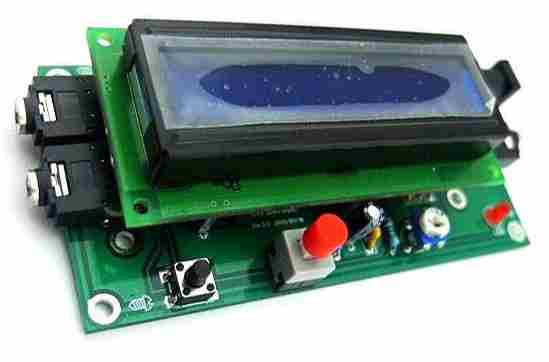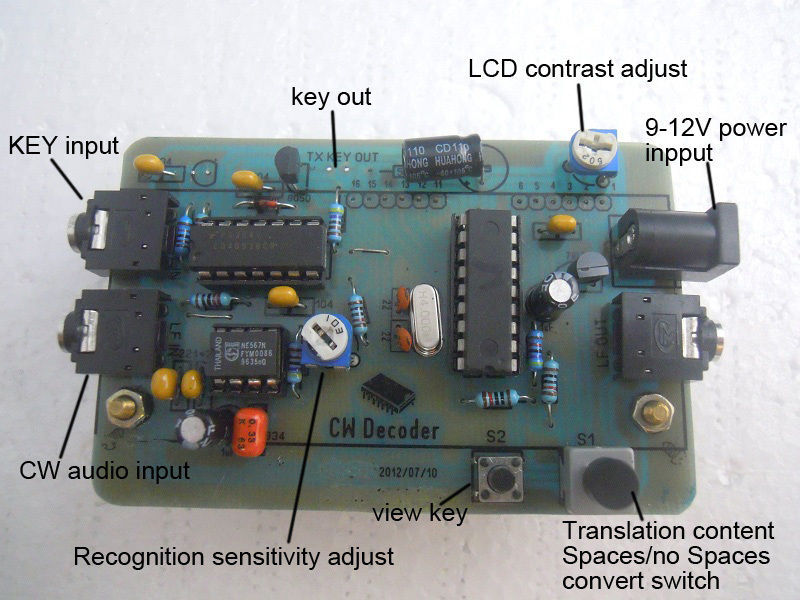
Designed primarily for learning CW, The decoder uses a PIC16F84 microprocessor and a NE567 PLL as analog interface.

Set-Up for Tinkering 1. Remove the LCD by gently lifting the LCD header pins out of their sockets 2. Turn the LCD adjust all the way counterclockwise and then back clockwise a few degrees. 3. Replace the LCD. 4. Plug in a 9-12 volt power source into the power input plug. 5. Note whether the LCD is too dark or too bright and adjust accordingly with the LCD adjust. 6. Find a CW Morse Code player such as “MorseCat 2.0” online and download it to your computer. 7. Create a CW file and run it on the Morse Code player. 8. Connect a cable between your computer’s audio output to the CW decoder audio input. 9. Connect a cable between the CW decorder’s audio output and a speaker or just use a headphone set. 10. While the CW player is running, you should hear it playing, but may not see anything on the
screen but a string of “I’s” and “E’s”–believe it or not, this is a good sign. 11. Turn the tone frequency adjust all the way clockwise. 12. Set your CW player tone to 690 Hertz on your computer. 13. Set your CW player speed to 22 words per minute. 14. Set your computer volume to 50% 15. Push the reset button on the CW decoder. 16. At this point you should now see the CW decoder operating as it should, reading
off the CW file you are playing on the CW player on your computer. 17. Tap the red character spacing button to select either “no spaces” or “single
spacing”–single spacing works best for reading. 18. At this point you can vary the CW player tone frequency, the CW player speed
and the computer volume to get the best audio signal to your CW decoder.